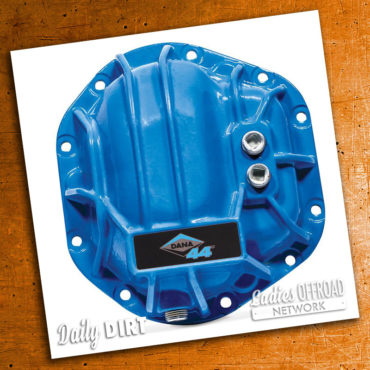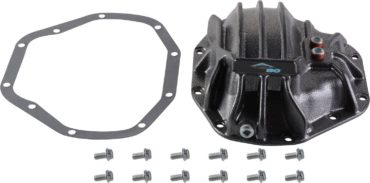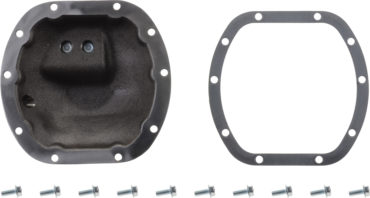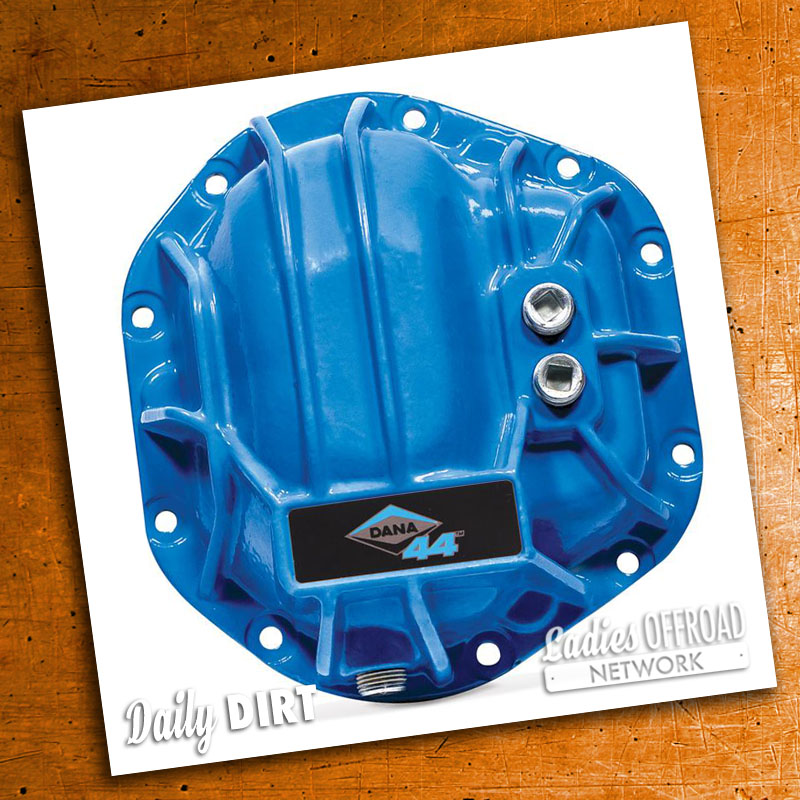 What the diff? When did everyone get lazy and stop calling it by its proper name: Differential Cover. Maybe it’s because it is a description of what it actually does, that it needs a fancier name.
What the diff? When did everyone get lazy and stop calling it by its proper name: Differential Cover. Maybe it’s because it is a description of what it actually does, that it needs a fancier name.
What is a Differential Cover
The differential cover is a cover on your axle housing that protects the internal moving part of your differential. 4-Wheel Drive vehicles have a front and rear differentials and covers because there are gears on both axles. A 2-Wheel Drive vehicle has only a rear differential and cover.
Differential Covers and their design are important because they are the first line of defense to a very sensitive part of your vehicle. The axle housing differential area is one of the most exposed areas of the vehicle that makes it easy to hit and damage. Puncturing a diff cover can immediately end your day on the trail losing fluid and/or potentially damaging the gears internally.
Unique Features of a Differential Cover
 When shopping for a differential cover may get overwhelming with the number of styles and options. What is the real difference, and what is actually needed? We have broken down some of the features and reasoning.
When shopping for a differential cover may get overwhelming with the number of styles and options. What is the real difference, and what is actually needed? We have broken down some of the features and reasoning.
- Materials:
There are multiple types of materials that a diff cover can be made from: Aluminum, Steel or Cast Iron. Each of these materials has different characteristics including strength and heat dissipation.
Did You Know: The main difference between the Steel and Cast Iron is that steel is produced from iron ore and scrap metals, and is called an alloy of iron, with controlled carbon . Whereas, around 4% of carbon in iron makes it cast iron, and less than 2% of carbon makes it steel.
Aluminum is a light material that can be heat-treated for additional strength but is not the strongest cover overall. If weight is a concern, an aluminum cover will decrease the weight of your overall vehicle. Aluminum also helps dissipate heat. We will talk about the dynamics of the differential gears in another article, but as you can image, with gears and oil there is friction and heat. Excessive heat causes the oil to change and possible damage to the gears. An aluminum cover helps distribute that heat.
Steel and Cast Iron are much thicker and tougher materials. They can take a harder rock hit or dragging across rocks. A thicker diff cover is like a cheap insurance policy for making it off the trail successfully that day.
- Maintenance:
 Filling your diff fluid is an important part of your 4x4 vehicle maintenance schedule. We will talk about how to do that in a different article, but keeping to the theme of this article, there are certain diff covers that make doing your maintenance much easier.
Filling your diff fluid is an important part of your 4x4 vehicle maintenance schedule. We will talk about how to do that in a different article, but keeping to the theme of this article, there are certain diff covers that make doing your maintenance much easier.
Some covers have oil plugs that are placed in a strategic spot to help you either: A. Fill Your Fluid, B. Check the Fill Line of your Fluid, or C. Drain the Fluid. Some covers have multiple plugs which could account for all of the above. Some place the plug in its location for no reason other than for design. There is also a style of diff cover that has a dipstick with a magnetic insert. (Magnet would help pick up any metal that could warn you about gear wear.)
Charlene Tip: I have noticed that sometimes oil plugs can be in the wrong place when adding additional aftermarket items, for example, Air Locker tubes. If you are in the market to upgrade, consider these added elements before purchasing.
- Looks:
 Of course, there is design and personality that can be involved. The diff cover is a part of your vehicle that is well seen, especially on obstacles. Some of the design has no added value, and sometimes the ridges are added for additional strength. Some come unfinished which allow you to finish with a specific color paint, or they can come in a variety of powder-coated colors. These items are personal preference but look past the design to understand why the manufacturer decided to do it that way.
Of course, there is design and personality that can be involved. The diff cover is a part of your vehicle that is well seen, especially on obstacles. Some of the design has no added value, and sometimes the ridges are added for additional strength. Some come unfinished which allow you to finish with a specific color paint, or they can come in a variety of powder-coated colors. These items are personal preference but look past the design to understand why the manufacturer decided to do it that way.
Next Steps:
Go look at your Differential Cover. Can you tell what materials it is made of? Where is the fill plug? Can you tell how it was meant to be utilized?
Also, notice, are there a lot of rock marks on it? Have you been sliding your vehicle across rocks on the diff cover? Let’s consider this piece of the vehicle when driving and choosing lines, but would it also be beneficial to replace it?
So when shopping in the aftermarket world, what is best for you? If you are a heavy rock crawler, or are still challenged with understanding the height of your vehicle in a rocky area, I would consider a stronger material. If you are a lighter wheeler, that may use 4High more often than 4Low (heat consideration) then consider an aluminum cover. I would also consider the drain plug options now knowing that this is an important part of maintenance!
Author: Charlene Bower
Share with your Friends on Facebook:
;
Share with your Friends on Instagram:
Share with your Friends on Pinterest:






